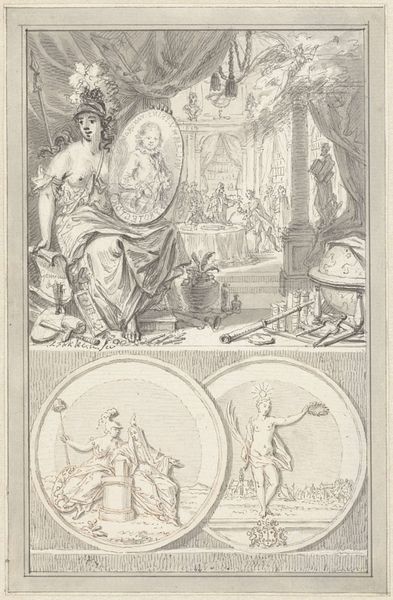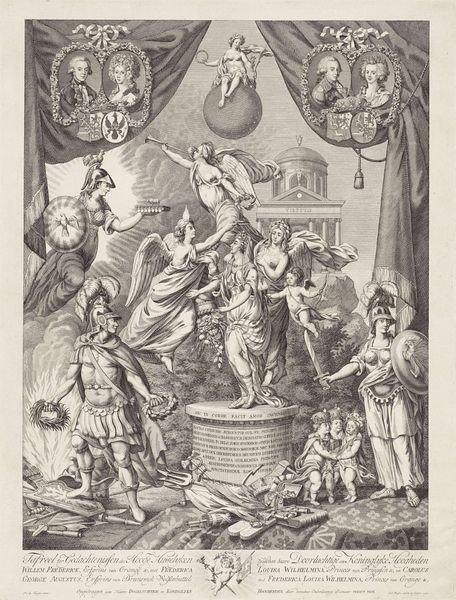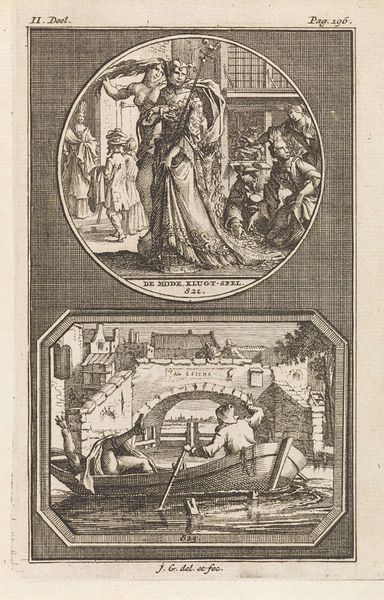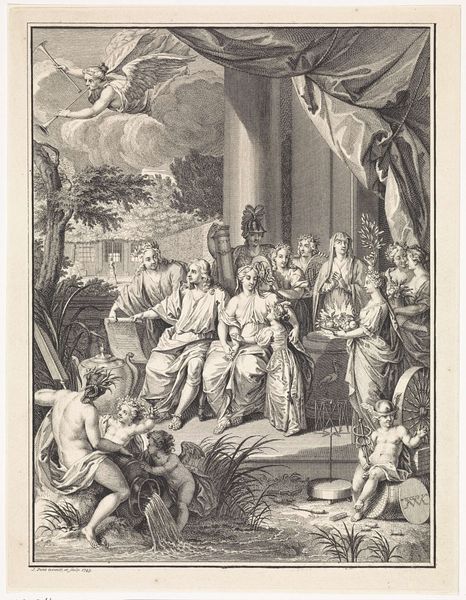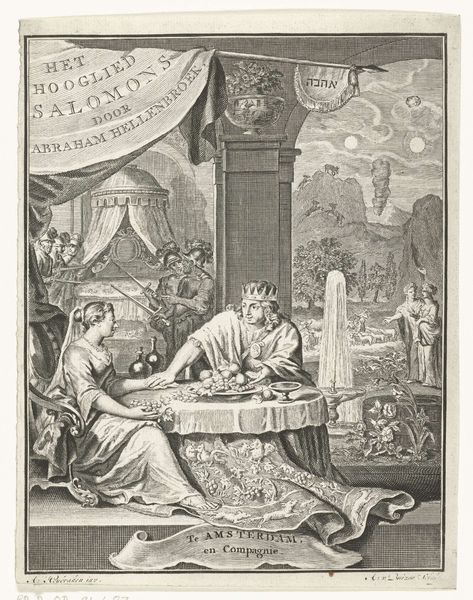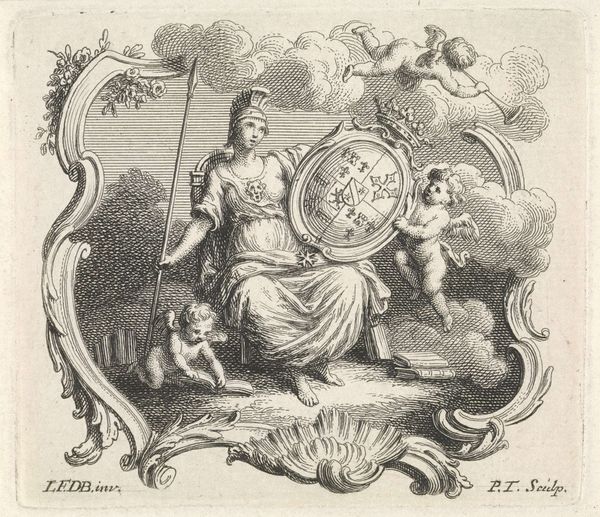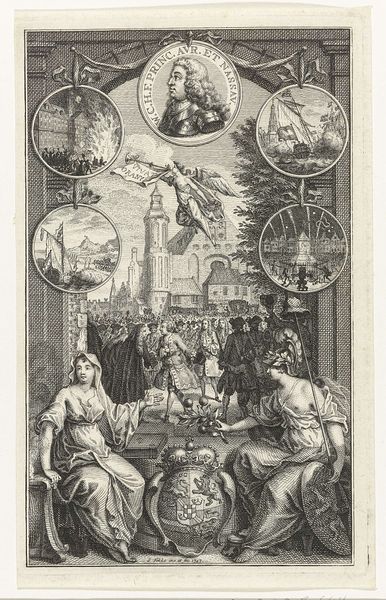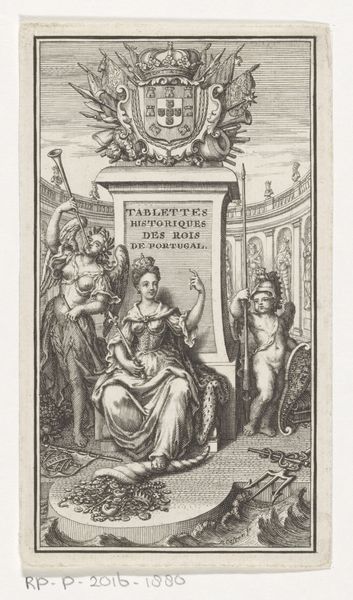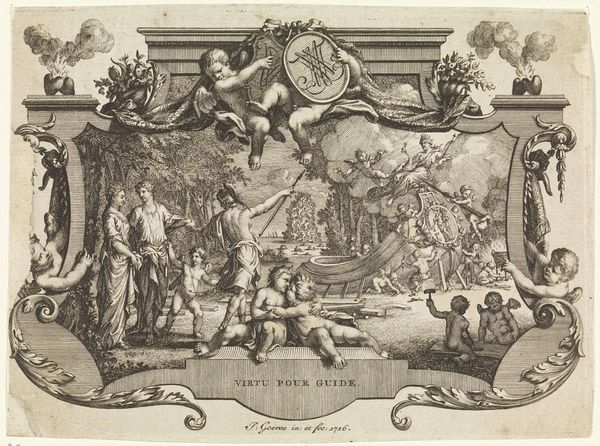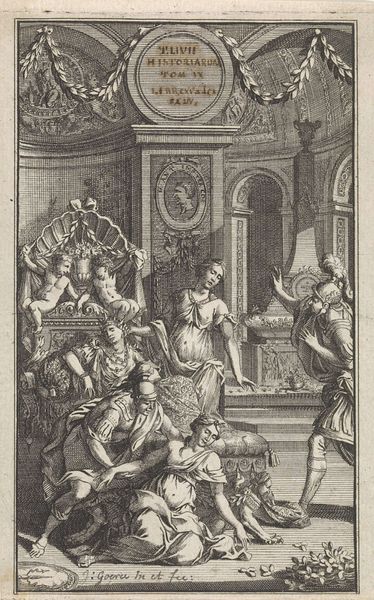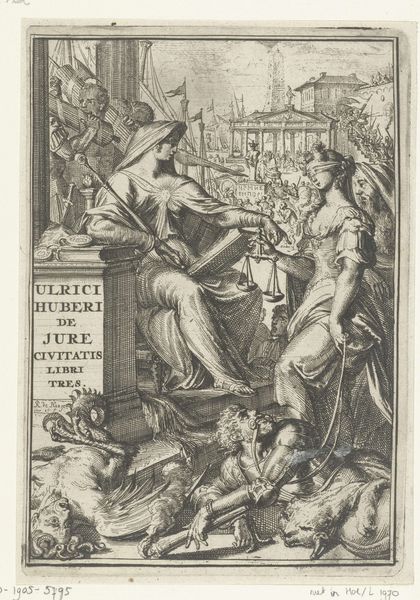
Allegorie op de oprichting van de Hollandsche Maatschappij der Wetenschappen, 1752 1752
0:00
0:00
simonfokke
Rijksmuseum
engraving
#
allegory
#
baroque
#
figuration
#
line
#
history-painting
#
engraving
Dimensions: height 166 mm, width 106 mm
Copyright: Rijks Museum: Open Domain
Curator: Here we have Simon Fokke’s “Allegorie op de oprichting van de Hollandsche Maatschappij der Wetenschappen, 1752,” an engraving in the Rijksmuseum collection. Its meticulous lines are striking. What are your immediate thoughts? Editor: The visual hierarchy here is intense, there are so many focal points. There’s an overt assertion of patriarchal order and learned virtue that is almost too obvious, and then the very strong implication of power through those same virtues. Curator: Indeed, Fokke employs allegory to extol the virtues of the newly founded Dutch Society of Sciences at Haarlem. We see a central female figure—likely Minerva—flanked by medallions illustrating ideal merit and piety. Consider the delicate engraving technique here. Note the controlled modulation of line weight. Editor: But controlled for whom, and for what purpose? Those medallions present a carefully constructed moral and scientific landscape, rooted in Enlightenment ideals, but accessible only to a select few. I am also finding this artistic choice unsettling. Curator: Semiotically speaking, these visual cues communicate the power structures and the intellectual authority upheld by the society. Note how mathematical and scientific tools at her feet point to scientific progress. We cannot dismiss the detail within the composition. Editor: Exactly. It also illustrates how those ideals were intrinsically bound to colonialism and trade during the Golden Age, benefitting largely only a small portion of Dutch society at the time. The wealth used to found this and other institutions certainly involved extraction from colonies and the enslavement of populations. This historical weight is also "encoded" in the overall structure, and its composition. Curator: An astute observation. Fokke uses the visual language of the baroque to construct a scene not just celebrating knowledge but affirming a specific, powerful ideology. This technique makes for a striking composition. Editor: It's a visually arresting piece precisely because it encapsulates the aspirations and contradictions of its time—a celebration of reason intertwined with systems of oppression and dominance, which were so prevalent then. Curator: Perhaps then the enduring tension between rationalism and social realities is a core, and deeply embedded, structural element of Fokke's vision here. Editor: Yes, reflecting on this print compels us to critically examine both the pursuit of knowledge and the legacy of power inherent within its institutionalization.
Comments
No comments
Be the first to comment and join the conversation on the ultimate creative platform.
